Understanding the Partner Visa Framework
Australia’s Partner Visa program provides two separate pathways to permanent residence: the offshore Subclass 309/100 and the onshore Subclass 820/801.
The primary distinction lies in the applicant’s location at the time of lodgement and the rights available during processing.
The offshore pathway requires the applicant to be outside Australia when applying for the Subclass 309 visa and, historically, also when the visa was granted. The onshore pathway, by contrast, allows applicants already in Australia on a valid visa to remain in the country throughout processing.
Many couples begin with an offshore application and later wish to stay together in Australia. Until late 2023, the law required the applicant to leave Australia before a Subclass 309 could be granted. That restriction has now been removed, giving couples far greater flexibility in 2025.
The 2023 Regulation Change and Its 2025 Significance
On 25 November 2023, the Migration Amendment (Location Requirements for Grant of Visa) Regulations 2023 came into effect.
This amendment removed the long-standing rule that Partner (Provisional) Subclass 309 applicants must be outside Australia when the visa is granted.
In practical terms, a Subclass 309 must still be lodged offshore, but the Department of Home Affairs may now grant the visa while the applicant is lawfully in Australia. The amendment remains active in 2025 and continues to guide partner visa strategy for many couples.
The change provides real benefits. Applicants can enter Australia lawfully on another visa, such as a visitor, student, or temporary work visa, and remain here until a decision is made. This eliminates the previous need for unnecessary travel purely for the purpose of visa grant.
Remaining Lawful in Australia During Processing
An offshore Partner Visa application does not create a bridging visa because it is lodged outside Australia.
To remain lawful in Australia while the application is processing, the applicant must hold either:
- a substantive visa, such as a visitor, student, or temporary work visa; or
- an existing bridging visa linked to another onshore matter, such as an AAT review or another application.
If that status expires before the Department reaches a decision, the applicant must apply for another lawful visa or depart Australia. Any period of unlawful stay can jeopardise the partner visa and may trigger restrictions under section 48 of the Migration Act 1958.
The Bridging Visa B Strategy — A Specialist Mechanism
Some migration professionals use a sophisticated technique commonly referred to as the “Bridging Visa B switcheroo.”
This strategy is legally permissible but complex and should only be undertaken with professional guidance.
The process operates as follows: an applicant who already holds a Bridging Visa B (BVB) linked to an onshore application travels offshore and lodges the Subclass 309/100 application while outside Australia. Upon return to Australia using the BVB, the applicant remains lawful while the offshore partner visa continues processing.
When the Department is ready to decide the 309, it may grant the visa even though the applicant is physically in Australia, as the 2023 amendment has removed the location restriction.
This method does not create a new bridging visa and carries strict timing requirements. It should be viewed as an advanced option suitable only for specific cases managed by experienced migration lawyers.
Withdrawing and Lodging Onshore — When It Is the Better Option
For some couples, withdrawing the offshore application and lodging a new onshore Subclass 820/801 is the most straightforward approach.
Lodging onshore results in the automatic grant of a Bridging Visa A (BVA), which allows the applicant to remain lawfully in Australia with work rights and access to Medicare. This approach can simplify the process and offer clearer appeal rights.
However, withdrawing and re-lodging also involves trade-offs. The original government fee for the 309 is not refundable, and a new lodgement fee must be paid for the 820 application. Processing times also restart from the beginning, and all relationship evidence must be resubmitted.
Couples who have significantly developed their relationship since the original offshore lodgement, and who wish to remain together in Australia without travel interruptions, often find this option worthwhile despite the added cost.
Strengthening Relationship Evidence
Whether continuing with a 309 or moving to an 820, comprehensive relationship evidence remains the foundation of a successful partner visa.
Applicants should maintain a consistent and well-organised record demonstrating their relationship across the four statutory factors:
Financial commitment: joint accounts, bills, mortgages or leases, and tax records.
Household structure: proof of shared residence, household responsibilities, and utilities.
Social aspects: photographs, travel itineraries, joint invitations, and declarations from friends and family.
Commitment to each other: future plans, beneficiary designations, and records of ongoing communication.
High-quality, chronological evidence demonstrates the authenticity and continuity of the relationship and can prevent unnecessary delays in processing.
Processing Timelines in 2025
Processing times vary depending on the subclass and the applicant’s circumstances. As of 2025, the Department’s published estimates are as follows:
- Subclass 309 (Provisional Offshore): approximately 9–13 months
- Subclass 100 (Permanent Offshore): 13–32 months following the 309
- Subclass 820 (Temporary Onshore): 12–26 months
- Subclass 801 (Permanent Onshore): 11–30 months after the 820
Applicants who maintain lawful status, submit complete documentation, and respond promptly to departmental requests generally experience shorter wait times.
Case Study — Daniel and Lea
Daniel, an Australian citizen, and Lea, a Filipino national, lodged a Subclass 309 application from Manila in mid-2024. Several months later, Lea obtained a student visa to undertake English studies in Melbourne. The 2023 amendment allowed the Department to grant a 309 while she was in Australia, provided she remained lawful at all times. In early 2025, Lea’s visa was approved while she was still in Australia — a result that would have been impossible before the reform.
This outcome demonstrates how the regulation change enables couples to remain together in Australia, provided that lawful status is maintained and every step complies with migration law.
Common Misunderstandings and Legal Risks
A number of misconceptions about switching partner visa pathways continue to circulate online. The most common include:
- Believing that a 309 can be lodged while in Australia. It cannot; the application must be made offshore.
- Assuming the 2023 regulation created new bridging visa entitlements. It did not.
- Confusing the location-of-grant change with the right to convert an offshore application into an onshore one. The two processes remain distinct.
- Attempting to rely on a Bridging Visa B without understanding its expiry conditions. If the BVB expires before re-entry, the applicant becomes unlawful.
- Overlooking the fact that unlawful presence or prior refusals can engage section 48, preventing further onshore applications.
These are serious matters that require tailored legal advice rather than reliance on generic online guidance.
Strategic Planning and Timing
Timing is often the deciding factor in whether a “switch” approach succeeds.
Couples should evaluate how long remains before their 309 decision is likely, whether the applicant’s current visa provides adequate coverage, and whether a new onshore application would delay permanent residence.
Financial and emotional considerations are equally important. Re-lodging incurs significant cost, and extended processing times may impact employment, study, and family plans. A consultation with an experienced migration lawyer can clarify the best course of action and ensure every step aligns with the regulations.
The Role of Professional Legal Advice
Partner visa strategy requires both technical knowledge and practical judgment.
The 2023 regulation simplified part of the process, yet managing lawful status, bridging-visa coordination, and timing remains highly complex.
An immigration lawyer can:
- interpret current policy and departmental instructions;
- manage lawful status through the correct bridging-visa sequencing;
- prepare persuasive legal submissions and relationship documentation; and
- minimise risks of refusal or cancellation.
The difference between a compliant pathway and an invalid application often comes down to professional guidance at the right time.
Frequently Asked Questions
1. Can a Subclass 309 be granted while the applicant is in Australia?
Yes. Since November 2023, the Department may grant the visa while the applicant is in or outside Australia, provided it was lodged offshore and the applicant remains lawful at the time of decision.
2. Does a 309 application create a bridging visa?
No. An offshore application never produces a bridging visa. Lawful stay in Australia must come from another substantive or bridging visa.
3. Is it possible to switch a 309 into an 820?
Not directly. The 309 must be withdrawn and a new 820 application lodged in Australia, which restarts processing and requires a new application fee.
4. What is the biggest risk with the Bridging Visa B approach?
Incorrect timing of travel or re-entry can result in unlawful status. Professional oversight is essential before attempting it.
A Final Word — Precision and Planning Lead to Success
Switching from an offshore Partner Visa (Subclass 309/100) to an onshore strategy is possible under current law, but it is not a simple administrative adjustment.
It requires a firm understanding of the 2023 regulation change, meticulous status management, and strong evidence of a genuine relationship.
When executed correctly, this pathway allows couples to stay together in Australia lawfully until visa grant. When handled incorrectly, it can lead to refusal, loss of fees, or lengthy delays.
At Augustine & Co. Immigration Lawyers, we help couples design partner-visa strategies that comply with every regulation while maximising the chance of approval.
If you have lodged, or are considering lodging, an offshore Partner Visa (Subclass 309/100) and wish to explore your onshore options, we invite you to book a confidential consultation here.
Our team will assess your eligibility, timing, and lawful-status options so you can remain together in Australia with confidence.
Lighting the way to your Australian dream.
Author
Calvin Augustine is the founding solicitor of Augustine & Co. Immigration Lawyers. He graduated with Honors from the University of London law school, before being admitted to practice in Malaysia and Australia (admitted in SA, appears in all Victorian Courts and Tribunals, at trial and appellate levels).
- Calvin Augustinehttps://augustineandco.com/author/calvin/
- Calvin Augustinehttps://augustineandco.com/author/calvin/
- Calvin Augustinehttps://augustineandco.com/author/calvin/
- Calvin Augustinehttps://augustineandco.com/author/calvin/




